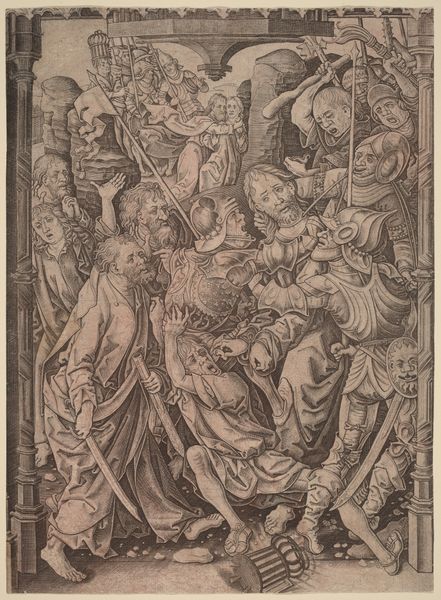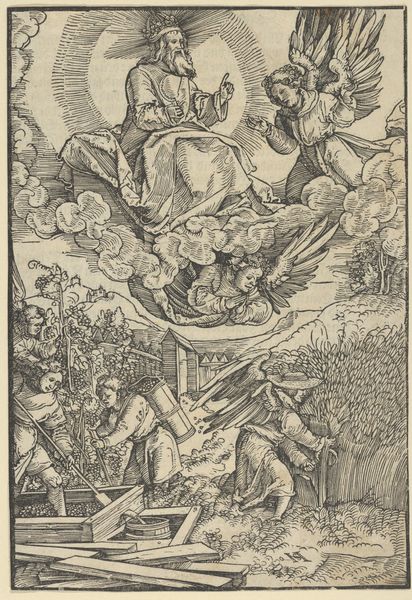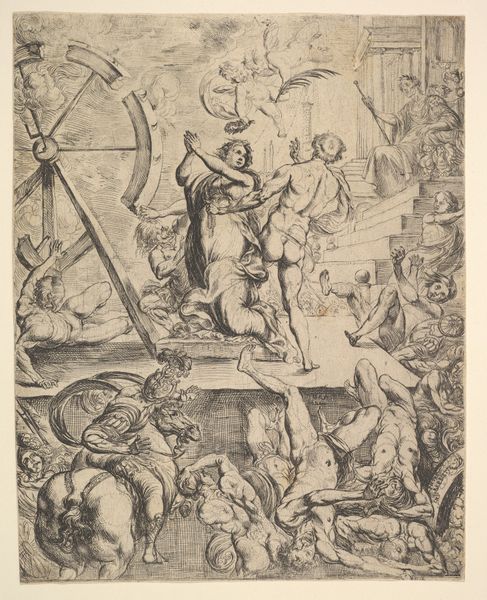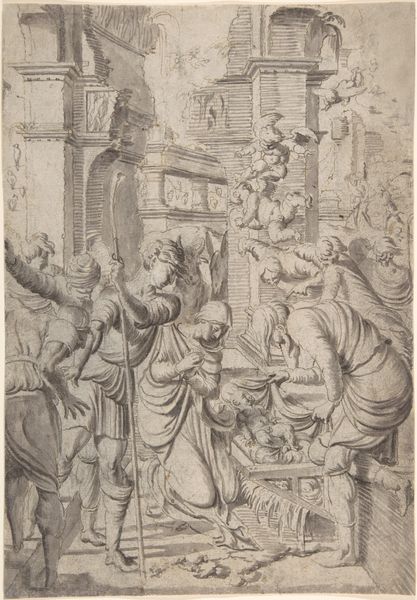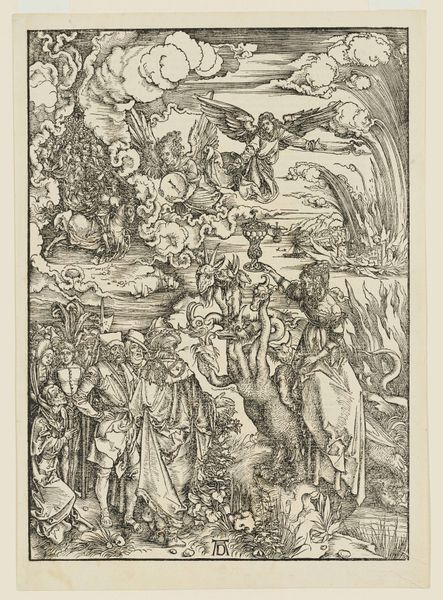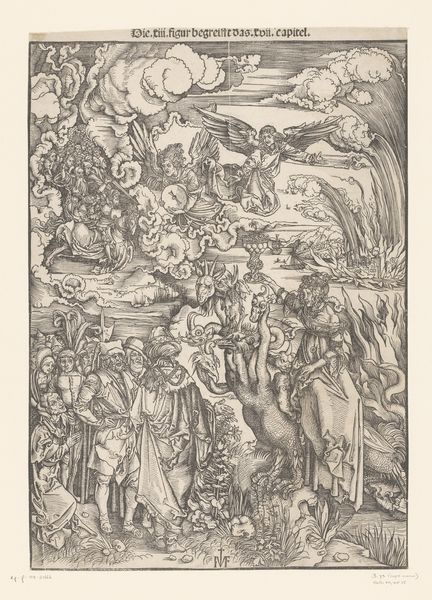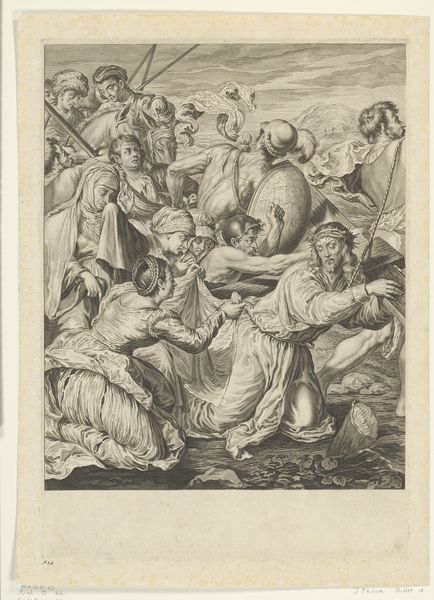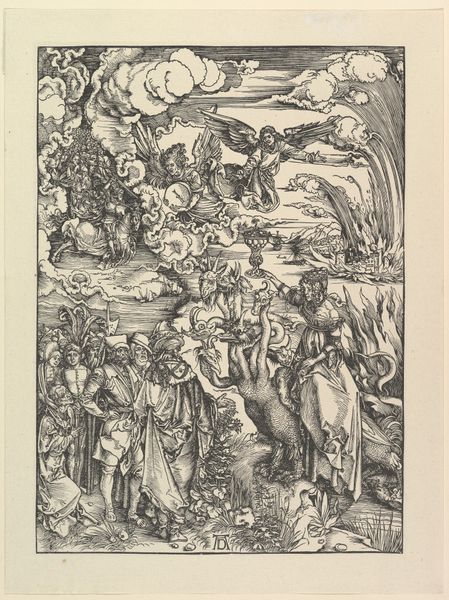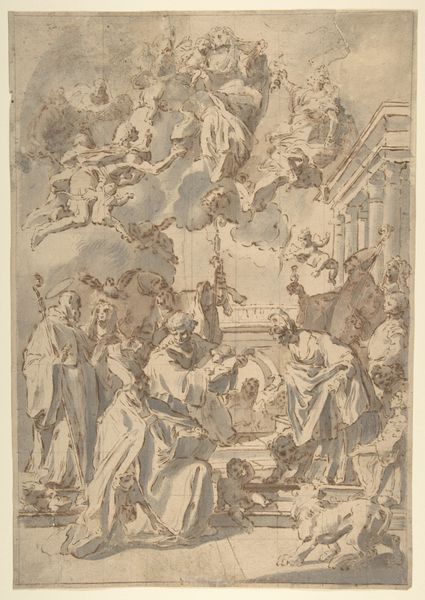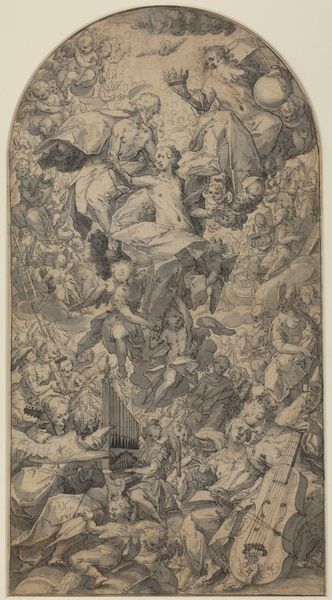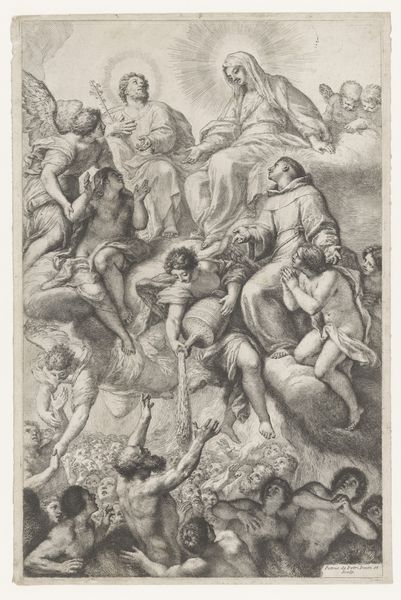
Madonna and Child Surrounded by Female Saints 1600 - 1678
0:00
0:00
drawing, print, ink
#
portrait
#
drawing
#
allegory
#
ink painting
# print
#
figuration
#
11_renaissance
#
madonna
#
ink
#
child
#
group-portraits
#
history-painting
#
angel
Dimensions: sheet: 12 1/2 x 7 3/16 in. (31.8 x 18.3 cm)
Copyright: Public Domain
Curator: What an intriguing swirl of figures! The overall tonality is soft, almost ethereal, but it also appears quite intricate upon closer viewing. Editor: Indeed. What we're seeing here is a piece titled "Madonna and Child Surrounded by Female Saints" created between 1600 and 1678 by Joseph Heintz the Younger. Currently, it resides here at the Metropolitan Museum of Art. It's executed primarily in ink. Curator: The use of ink washes gives a sense of depth despite the fairly limited tonal range. It's almost as if we're looking at a scene shrouded in mist. Notice how the figures blend into each other; forms overlap. It suggests the divine blurring earthly boundaries. Editor: Precisely. These swirling compositions of idealized figures were a signature of the late Renaissance aesthetic. The central Madonna certainly conveys power, enthroned, holding the Christ child. However, that placement, those visual cues also assert power, especially when the visual construction of 'female' piety had immense societal influence. Curator: And note how strategically the artist uses shadow and light. It isn't about realistic modelling, but about emphasizing certain forms over others. The luminosity of the Madonna’s face draws your eye, a beacon in this sea of figures. Editor: That emphasis elevates the symbolic importance of maternal power, yet within very prescribed acceptable religious contexts, right? How these images of idealised, powerful womanhood reinforce structures that, in reality, subjugated women. And who were these ‘saints’? The figure on the left has some type of manuscript? This seems less a work of pure religious worship and more one that blends those with worldly power. Curator: It certainly serves to create and reinforce a symbolic vocabulary and that the visual dynamic has real social consequences. Yet in a way, this makes a case for art’s very unique function, its ability to present ideology not as doctrine, but something living, visceral even. Editor: So, after analyzing Heintz's choices and the picture's effect as it echoes across time, perhaps the piece can start a deeper appreciation, and an appreciation that allows the viewer to connect and feel within the society that originated this aesthetic choice. Curator: A beautiful visual representation frozen in time! A moment, now preserved as relic but still so potent!
Comments
No comments
Be the first to comment and join the conversation on the ultimate creative platform.

